I didn’t go moose hunting last year. Rose had said that I could hunt all I wanted, but that I’d better not get one or we’d have to buy a new freezer. I went to check, and, sure enough, we still had a lot left from the one I’d gotten the year before. It seemed a bit disrespectful to go out after fresh moose when there was so much still left from the last one, so I didn’t go. And I really missed being out.
So this year I was ready to hunt again. I wanted to bring a hairy friend home for dinner. But I didn’t want to go just for meat, I also wanted to get out and see the country and try to figure out how to cross paths with a nice, big moose. A friend invited me to go with him to a secret spot where we’d be almost guaranteed to get a bull on the first day, but I didn’t want to be done hunting so fast. The time out there was important, too. So I made different plans.
It is always hard to carve out time to hunt when the semester is getting under way, but burning the midnight oil and working on weekends can get enough stuff pushed through that a no-guilt trip can be taken. I also bring things along that can be done while I am out in the woods. I was able to pack up and get out on the evening before the season began so that I could wake up in moose country. The next morning it was great to be out hunting again. I found some moose sign before it began raining, so the plan was working. The rain kept up, though. A cool, wet weather system came in and held for days. I enjoyed being out and hunting regardless of the wet weather, but I did learn that my raingear was effectively dead. And I didn’t see any moose.
The berry crop was a good one this year, despite our very dry summer. High-bush cranberries especially seemed abundant, and I periodically enjoyed their tart flavor as I walked quietly around looking for moose or moose sign. It was also a good year for Amanita. At one place I found a forest of 300-400 of these large, red-capped mushrooms. Eventually I gave up and came back in from the woods to catch up on office work. Being wet and not seeing moose loses its excitement after a few days. It was at times so quiet out there sitting on a stump that I could hear my blood flow. Hunter densities were thankfully low—probably because moose densities were also very low. It was really muddy driving back out to the paved road.
A busy time ensued that kept me out of the woods for over a week. In addition to the normal fall business at work, we had some important things to attend to at home. The biggest was that our chimney needed to be examined by a professional, and the prognosis was dire. It needed to be replaced before winter. We got a quote for what was going to be a complete, top-to-bottom replacement that would leave us with a 30-year chimney.
When I told Rose what it would cost, she said “Wow. How much for just ten years?” Rose is funny that way. They got it installed in one long day, and they did a nice job of it, too. And after a little more office work I was freed to go back out looking for that hairy friend.
It was a gorgeous fall day, a Sunday afternoon, but the logging roads were still muddy from all the rain, so driving had to be done carefully. In my haste to pack up and get out, I neglected to turn off the internal power switch to the jacks on the camper after putting it on the truck. I had idly noted that one of the external rocker switches on the jacks was sticking, but it didn’t really register. Later, as I was grunting the truck up out of a mudhole, a terrible noise erupted. I stopped and leaped out, and I found one of the jacks burying itself into the roadbed because of that stuck rocker switch. It had apparently been slapped on by an alder branch as I’d hugged the edge of the road at an earlier muddy spot. The jack was bent beyond repair, as it turned out. I couldn’t get it raised again, so, cursing operator error, I pulled out a wrench, took it off, and tossed it in the back. I had a particular stump in mind where I needed to be about an hour before sunset, so I carried on to my camping spot and went hunting.
That evening on my stump I heard one and perhaps two moose shortly before sunset. The closer one was a bull—I distinctly heard the scrape of a decent-sized antler against a tree branch. But while he was close (less than 150 yards), he was walking away from me and I couldn’t see a thing with all of the leaves still on. So darkness came with no moose seen. The second one I was pretty sure was a moose but it vanished with little noise.
I was there again at dawn, but to no avail. There was deep, tranquil silence in a beautiful landscape. Later, after some soup, a short nap, and a mental reload, I went out at midday to take a walk on the moose’s turf. I found just one set of tracks disturbing otherwise mooseless terrain where I’d heard the bull. I walked slowly through the aspen parkland deeper into the forest and far from the road. Even though I went much farther out than I’d want to carry a moose back from, I saw little fresh sign, and there was still a lot of parkland to go. I went back, climbing up a semi-bald ridge to camp, where I relaxed a little until the evening hunt, when I sat fruitlessly on my stump again.
The next morning it was cold out. There had been a hard frost in the night. And it was remarkably still. There seemed to be fewer animals present this fall than I was used to. I’d seen no voles, hares, porcupines, foxes, lynx, or coyotes—all of which I’ve seen at one time or another on previous moose hunts. While I’d heard red squirrels, the hardy rodent of these forests, I hadn’t actually seen one yet (just a case of not caring enough to look). In fact, the largest mammal I’d seen so far had been a shrew. While sitting quietly on my stump, there had been a shuffling in the leaf litter that at first I took for a vole, but the small animal kept squeaking to itself, I so I guessed that it might be a shrew. It finally snuffled and squeaked its way right to my feet, and as I carefully watched the leaves it was moving with its passage, I was finally rewarded when it lifted up a yellow birch leaf, took a quick snuffly, squeaky look at the larger world, then turned around and dove back under its rustly autumn blanket.
Again that evening it was silent on the stump. The moonrise, as on the night before, was spectacular. I put in my time on the stump once more in the morning, again undisturbed by moose, then came home to put in a partial day at the office. I took Rose to the airport at midnight that night. It was 33º F and cloudy, but I was very surprised to wake up the next morning to find an inch of snow on the ground. It was 18 September, just four months since our last snowfall on 17 May. As I listened to the radio on the drive in to work, I learned that this was the fourth-shortest snow-to-snow summer interval on record.
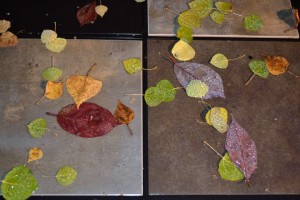 I put in two good days at work before heading out one last time for moose on a Thursday evening. This time I was going to call for them. At my stump, I used a hatchet to intermittently chop at a spruce tree and a fiberglass calling funnel to grunt and rake branches. No response. Nor was there any response the next morning, which was quite cold. The night before, it was so quiet that I could hear snowflakes fall on the leaves—those still on the branches and those on the ground. This morning the snowfall was lighter and quieter, but it was still remarkable to be able to hear snow fall. It was that quiet out.
I put in two good days at work before heading out one last time for moose on a Thursday evening. This time I was going to call for them. At my stump, I used a hatchet to intermittently chop at a spruce tree and a fiberglass calling funnel to grunt and rake branches. No response. Nor was there any response the next morning, which was quite cold. The night before, it was so quiet that I could hear snowflakes fall on the leaves—those still on the branches and those on the ground. This morning the snowfall was lighter and quieter, but it was still remarkable to be able to hear snow fall. It was that quiet out.
Dead camper batteries and the beeping alarm that cheerfully informs the occupant of this situation had gotten me up at 0430. With no moose responding to my calling and no tracks seen in the light snow cover, I decided to call it quits and catch the Friday afternoon seminar (Dave Mech). After that, I took my bow out and stalked the woods behind the house to see if any moose had shown up there yet. Nope. It was just as empty of moose as it had been at the beginning of the season. So I closed out this season mooseless. I was far from alone in this, but it sure had been great to get out. I did eventually see a red squirrel, but I also saw two more shrews, so they ended up winning the “best mammal” of the season award.
Final note: Why is this titled “Zero-inch Club”? The Fairbanks Daily News Miner has a special section each fall celebrating the hunters who have taken a very large moose that season. They call it the “60-inch Club.” But they aren’t the only hunters with a story to tell.

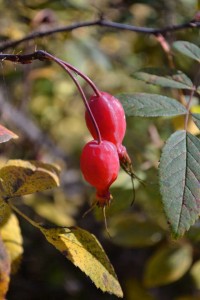
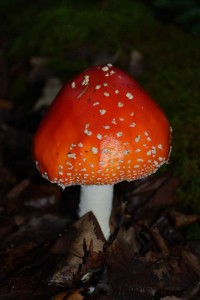
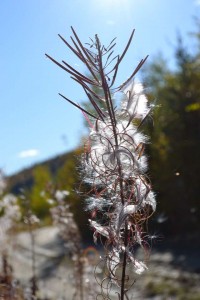
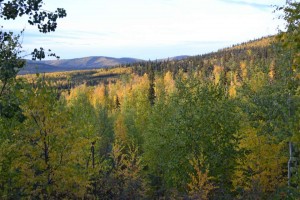
Sorry you didn’t have any luck, but I did laugh when you said you needed to get out the night before so you could wake up in moose country. You ARE in moose country in your back yard!
I read an article that said the moose population in Minnesota is dwindling at a rapid pace.
Thank you for the new story!